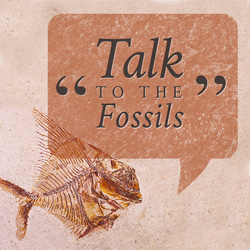 Evolution
Evolution
 Intelligent Design
Intelligent Design
Natural Genetic Engineering? Natural Popcorn? Or Something More Important?

It is just not Darwin’s world any more. Life forms share genes, irrespective of ancestry, pick up traits during their lifetimes that they pass on, can lose key functions and then get them back later, and treat their genomes like projects under construction.
 It is certainly not the world anyone expected to find when we first started mapping genomes. The scientist best known for pulling together some ideas around natural genetic engineering is bacterial geneticist James Shapiro, author of Evolution: A View from the 21st Century (2011).
It is certainly not the world anyone expected to find when we first started mapping genomes. The scientist best known for pulling together some ideas around natural genetic engineering is bacterial geneticist James Shapiro, author of Evolution: A View from the 21st Century (2011).
He also wrote a series of essays at the Huffington Post, noting, as sympathetic book reviewer Franklin Harold (Department of Microbiology, University of Washington) puts it:
Briefly, the architecture of genomes turned out quite unlike what had been expected. In higher organisms, at least, genes are composed of both coding and non-coding sequences, and must be spliced prior to expression. Classical protein- coding sequences make up an astonishingly small proportion of the genome, just a few percent. The remainder features regions that specify an intricate network of regulatory elements, many based on RNA rather than proteins. These are concerned, not only with the expression of individual genes, but with the fidelity and architecture of the genome as a whole. Genomes also contain numerous stretches, long and short, of repetitious DNA, whose physiological functions are not obvious.
…
At first sight, the continuous makeover seems merely to supply more variations for selection to winnow, but Shapiro argues that there is much more to it than that. Natural genetic engineering generates different kinds of variation from those produced by classical mutations, one gene at a time. Rearrangements can take place at multiple locations at once and shuffle entire domains from one protein to another, producing novel combinations quickly and abruptly, perhaps even purposefully. Genomes, it seems, are built to evolve — not at the petty pace of classical genetics, but in leaps that entail rearrangement of the genetic architecture or the import of foreign information. So could this be the way that organisms generate the multiple, coherent variations that seem required to manufacture complex organelles such as eyes or flagella? At the end of the day, that is a question that must be answered by experiment; we are not there yet, but the technology to address such issues is coming to hand.
That said, he argues that we can deal with all these questions without really major conceptual changes (2013):
If experiments show that cells can make distinct appropriate NGE responses to different adaptive challenges occurs, we need to figure out how they do so. This almost certainly would prove to be more than a strictly mechanical process. How do cells carry out their computations to make useful goal-oriented responses? A successful answer to that question will certainly involve cybernetics. If such investigations take evolution science into areas that are more than strictly material, so be it. As long as we stay within the realm of natural processes, there are no boundaries on what science can address.
But some of us are not so sure. Philosopher James Barham thinks the main issue is seeing life forms as if they were machines:
We are finally beginning to realize, on the basis of irrefutable empirical evidence, as well as more careful analysis of Darwinian theory itself, that purposeful action in living things is an objectively real phenomenon that is presupposed, not explained, by the theory of natural selection.
Yes, that is the problem: Why does the animal want to live?
We can build machines — we create them to do what we want — and then put them out with the trash. But not free-living life forms. They try to survive. To deny this would require us to say, as Barham notes, that purpose is an illusion.
Part of the problem between Barham and Shapiro, which led to an exchange of views, sounds conceptual. What does Dr. Shapiro mean by “natural” processes, as opposed to “more than strictly material” ones, as above? A strictly material process would be a series of events fully explained by material processes (for example, what happens when a loose stone falls off a cliff).
But some entities in nature are not material at all: the number 7 comes to mind. Some philosophers have argued that we can construct a theory of items grouped by sevens without using a concept like 7. But whatever advantages these philosophers’ suggestion may offer, it does not represent what people do. We have an immaterial concept of 7 that organizes items and events, instantiated in various media at various times. It is natural without being material in any meaningful way.
Life forms seem to be somehow in between. They are material, but unlike stones, they don’t just exist. They want to exist, and to go on existing. They often seem to have a number of additional, related goals.
If Dr. Shapiro can account for the purposeful way in which life forms strive to sustain their own existence as part of a natural world, it is — as he clearly recognizes — a natural world that is far removed from the Darwinism of the science textbooks, which emphasizes the random nature of these processes.
Well, we must shortly look at the Darwinism of the textbooks.
See the rest of the series to date at “Talk to the Fossils: Let’s See What They Say Back.”
Image: � bit24 / Dollar Photo Club.
